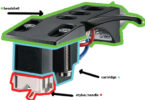Botnet vs Malware
Summary: Difference Between Botnet and Malware is that a botnet is a group of compromised computers connected to a network such as the Internet that are used as part of a network that attacks other networks, usually for nefarious purposes. While Computer viruses, worms, Trojan horses, and rootkits are classified as malware (short for malicious software), which are programs that act without a user’s knowledge and deliberately alter the computer’s operations.

Botnet
A botnet is a group of compromised computers connected to a network such as the Internet that are used as part of a network that attacks other networks, usually for nefarious purposes. A compromised computer, known as a zombie, is one whose owner is unaware the computer is being controlled remotely by an outsider. Cybercriminals use botnets to send spam via e-mail, spread viruses and other malware, or commit a denial of service attack.
Malware
Computer viruses, worms, Trojan horses, and rootkits are classified as malware (short for malicious software), which are programs that act without a user’s knowledge and deliberately alter the computer’s operations. Unscrupulous programmers write malware and then test it to ensure it can deliver its payload. The payload is the destructive event or prank the program is intended to deliver.
Virus
A computer virus is a potentially damaging computer program that affects, or infects, a computer negatively by altering the way the computer works without the user’s knowledge or permission. Once the virus infects the computer, it can spread throughout and may damage files and system software, including the operating system.
Worm
A worm is a program that copies itself repeatedly, for example in memory or on a network, using up resources and possibly shutting down the computer or network.
Trojan
A Trojan horse (named after the Greek myth) is a program that hides within or looks like a legitimate program. A certain condition or action usually triggers the Trojan horse. Unlike a virus or worm, a Trojan horse does not replicate itself to other computers.
A computer infected by a virus, worm, Trojan horse, or rootkit often has one or more of the following symptoms:
- Operating system runs much slower than usual.
- Available memory is less than expected.
- Files become corrupted.
- Screen displays unusual message or image.
- Unknown programs or files mysteriously appear.
- Music or unusual sound plays randomly.
- Existing programs and files disappear.
- Programs or files do not work properly.
- System properties change.
- Operating system does not start up.
- Operating system shuts down unexpectedly.
Currently, more than 300,000 Web sites can infect your computer with known viruses, worms, Trojan horses, rootkits, and other malware. These malicious programs deliver their payload on a computer in a variety of ways: when a user (1) opens an infected file, (2) runs an infected program, (3) boots the computer with infected removable media inserted in a drive or plugged in a port, (4) connects an unprotected computer to a network, or (5) when a certain condition or event occurs, such as the computer’s clock changing to a specific date. A common way computers become infected with viruses and other malware is through users opening infected e-mail attachments.
Also Read:
Difference Between Malware and Spyware
Difference Between Malware and Adware
Difference Between Malware and Antivirus
Difference Between Malware and Virus






Leave a Comment
You must be logged in to post a comment.